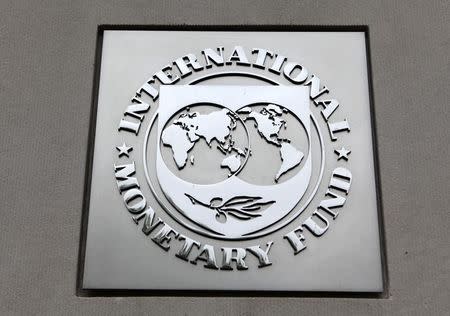IMF cuts global growth forecasts again, cites commodity and China worries
By David Chance
LIMA (Reuters) - The International Monetary Fund cut its global growth forecasts for a second time this year on Tuesday, citing weak commodity prices and a slowdown in China and warned that policies aimed at increasing demand were needed.
The Fund, whose annual meeting starts in Peru this week, forecast that the world economy would grow at 3.1 percent this year and by 3.6 percent in 2016.
Both new forecasts are 0.2 percentage point below its July forecast and are 0.4 percentage point and 0.2 percentage point below its April outlook, respectively.
The downgrades come after central banks in major industrial economies have cut rates to near zero and spent around $7 trillion in quantitative easing programs in the seven years since the global financial crisis. Despite these measures, investment, growth and productivity are stuck below pre-crisis levels and there is a lack of consumer demand.
Among major economies, the United States is expected to grow by 2.6 percent in 2015 and by 2.8 percent in 2016, the Eurozone is forecast to grow by 1.5 percent and 1.6 percent, respectively, with Japan seen at 0.6 percent and 1.0 percent.
The Fund sees growth in China slowing to 6.8 percent this year and 6.3 percent in 2016.
The biggest hit to growth will come in emerging economies where the IMF cut its growth forecast to 4 percent in 2015, due to a sharp slide in commodity prices.
"The distribution of risks to global growth remains tilted to the downside," the Fund said in its World Economic Outlook publication.
It said that "downside risks to growth for emerging market and developing economies have increased, given the risks to China's growth transition, more protracted commodity market rebalancing, increased foreign exposure of corporate balance sheets and capital flow reversals associated with disruptive asset price shifts."
MONETARY POLICY CAN'T DO IT ALONE
The Fund expects the Federal Reserve to start raising rates this year, although it expects the central bank to stay its hand until it sees signs of inflation rising toward its two percent target.
The Fed was criticized for failing to communicate effectively at its September rate meeting when comments prior to the event indicated that liftoff from zero rates was possible. Markets are now pricing in a first move in March 2016.
Greater transparency by the Fed would ease possible disruptions to other economies, particularly emerging markets, which are more vulnerable to changes in U.S. policy.
The Fund has also warned the Fed not to hike prematurely.
"Regardless of the timing of the initial policy move, the data would suggest that the subsequent rate increases should be gradual," the IMF said.
Nonetheless inflation remains well below target, and market-based expectations show it is expected to remain below the Fed's target for a considerable time.
The U.S. core Consumer Price Index, which strips out food and energy costs, ticked up just 0.1 percent in August, reflecting a stronger dollar. In the 12 months through August, the core CPI increased 1.8 percent. It was the fifth time in six months that the 12-month change was 1.8 percent.
Both Japan and the European Central Bank are seen as ready to undertake more quantitative easing, which helped stave off a banking collapse, but has so far failed to boost demand.
The Fund stressed that monetary policy alone would not re-ignite global growth. Output gaps in the Eurozone remain large, it said, and recent economic indicators suggest Japan may be losing traction.
It also cautioned that commodity-dependent emerging market economies faced risks due to a large build-up of corporate debt, some of it in state-owned enterprises.
"Complementary fiscal policy action in countries with fiscal space is also important, supporting global rebalancing, and demand-supporting structural reforms are necessary, in particular to improve productivity and stimulate investment."
(Reporting by David Chance; Editing by Andrea Ricci)



